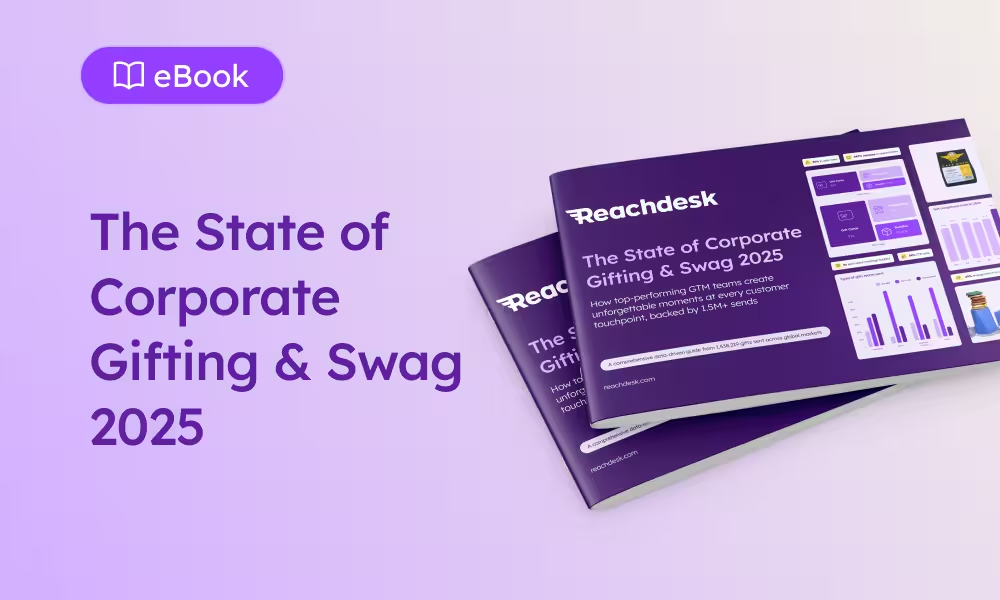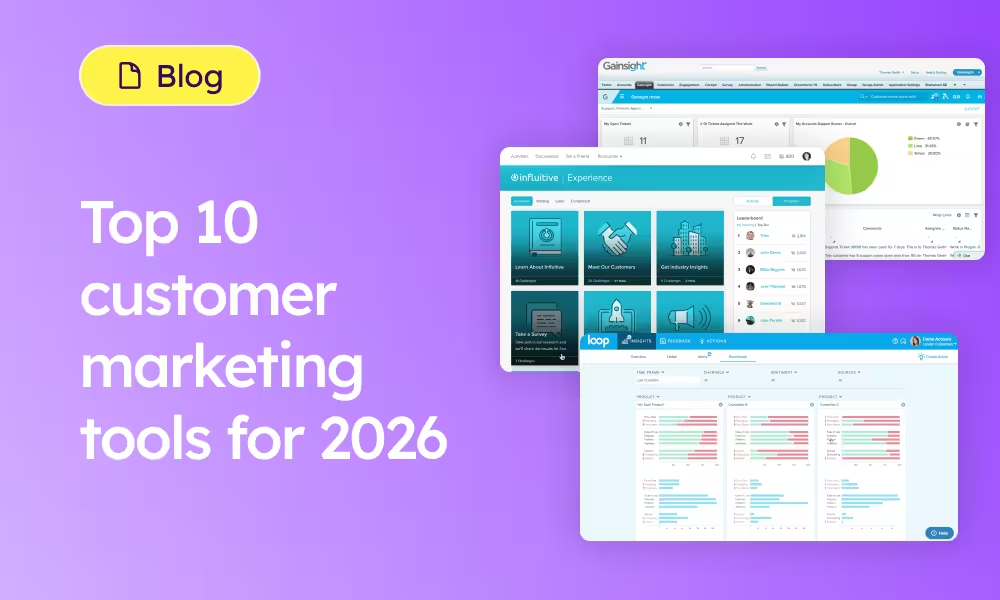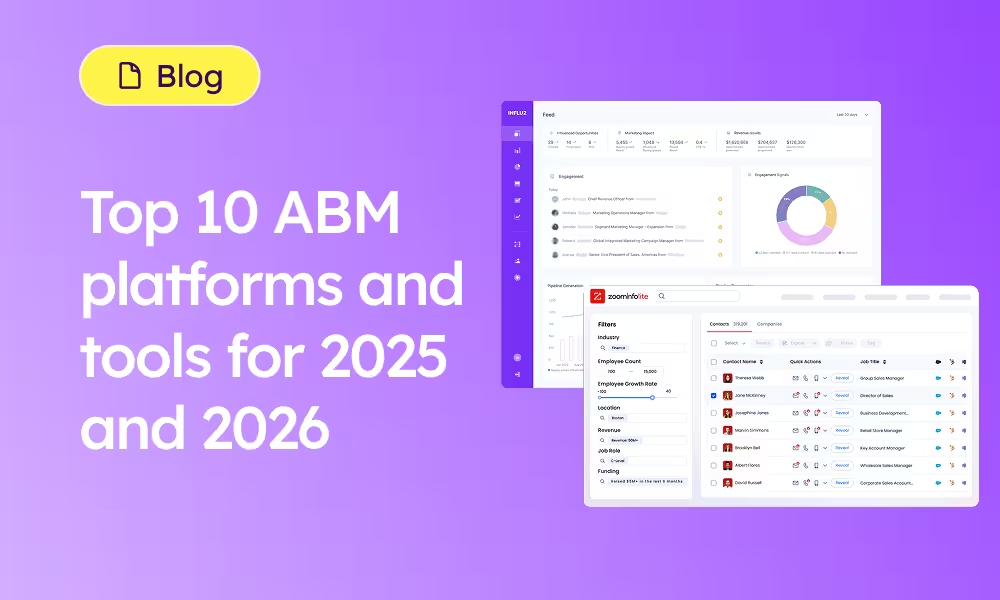One powerful platform for ROI-driven corporate gifting, swag, and engagement at scale.
It’s no secret that upselling a valued client is far easier and more cost-effective than bringing in a new one. After all, nurturing existing relationships is the key to building stronger and more lucrative ones in the long term.
In our guide to the perfect SaaS upsell, we’ll explain the five steps you need to follow to secure a deal, from building trust to picking the right moment. Keep reading to learn in more detail what upselling is, and why your sales team should be employing it as a strategy to drive more revenue.
What does upselling mean and what does it look like?
Upselling is the process of adding revenue to an existing contract. It’s a strategy that’s common in the SaaS industry and needs to be carefully timed and executed for the best results.
Some examples of SaaS upsells include:
- Adding new users to an account
- Adding new functionality to an account
- Enhancing or increasing professional services offered
Essentially, it’s all about enhancing your client's experience with your product or service and increasing your revenue as a result.
Upselling and cross-selling - what’s the difference?
Upselling - Focused around adding revenue to existing contracts by motivating clients to upgrade or enhance their existing account.
Cross-selling - Geared towards encouraging clients to buy additional products or services that complement the ones they already have.
Why is upselling to existing clients important?
Having a watertight upselling strategy in place for existing clients is a great revenue booster. Upselling leads can increase Customer Lifetime Value (CLV), which helps to drive long-term growth, as well as customer loyalty and retention.
But, before you start testing your existing clients' purchasing power, it’s important to make sure that your product is strategically set up for upselling. Moreover, it’s important to remember that upsells aren’t simply a fast-track to instant revenue. Ultimately, they need to fit into your wider sales strategy and business model. This is where the Land and Expand model comes in.
Land and Expand is a customer-centric philosophy that involves gradually showing your clients value with your product or service and gaining their trust, so that you can increase the business they do with you. Excellent customer service is a key component of Land and Expand and helps to build greater trust on the client side. Once the relationship is strong and secure, then you can start talking about upsells.
Pro Tip: think about the way your product is packaged and priced. Consider if it’s set up to accommodate upsells - do you have the ability to offer clients a premium service or product? If not, you might need to rethink your packages, price points, and solution.
The perfect upsell sequence
Now you know that the basis of any upsell is good timing and trust, it’s time to get down to the nitty-gritty.
Here are the steps to securing an upsell:
Step 1: Set off on the right foot
1. Provide a smooth handover from sales to customer success
To ensure a smooth handover from sales to customer success, make sure that a comprehensive set of notes have been compiled and passed on to the account owner. At the initial kick-off meeting with the CSM team, having the sales rep who brought the client in present acts as a nice touch, and shows your eagerness to hand over in the best possible way.
The relationship is at a crucial point here, so direct mail can work its magic to strengthen the bond - sending a ‘congratulations for joining us’ bottle of bubbly or cupcakes could work like a charm!
2. Create a painless onboarding process
A painless onboarding process involves an overview of what the client can expect throughout the customer lifecycle, a comprehensive overview of the tool, as well as a chance to build the relationship. Make sure that clients have access to user guides (whether it’s videos or documents), as well as a contact list of all the people and teams that will be supporting them. Gifting can be used to reward clients for completing steps in the onboarding checklist, too.
3. Ensure quick adoption of your product or service
Quick adoption of your product or service usually involves high usage, so encourage your client to dive in with the help of tutorials and face-to-face question sessions available for all stakeholders and relevant team members.
Step 2: Build trust
1. Provide regular touchpoints
Make sure the client success team is on hand to answer any questions , and check in regularly with the client based on their preferred method of communication
2. Become a trusted advisor
Be a source of truth for your clients by providing them with best practices and advice on how to use your product and/or services to the best of its ability.
3. Always listen to the client’s needs
Listening is a key skill in any relationship, but particularly in customer success. Being able to anticipate your clients' needs involves listening to their pain points and working with them to solve them, particularly in the case of product-led upsells.
Step 3: Listen and educate
1. Regular product and client comms
Keep clients updated about new product features and let them know about any relevant news - even if it’s bad. It’s far better to keep clients in the loop than go quiet, as that’s when the relationship can break down.
2. Actively ask for feedback and address questions
Sending surveys and chatting with clients about feedback on your products and services is vital to gauging their satisfaction. Understanding your client’s satisfaction will allow you to create action plans, whether it’s to keep doing what you are doing, bring in additional support or pursue an upsell.
Step 4: Find the right moment
1. Create urgency and excitement
Finding the right moment to present an upsell opportunity is an art. Keep an eye out for triggers like news of funding from clients, or a business expansion that could be made easier with an enhanced version of your product or service. Gifting can also help to create excitement around a product-led upsell, so why not try sending edible gifts or sweet treats to stakeholders.
2. Consider internal processes, projects, and changes for the client
Whilst you might think it’s the perfect opportunity to upsell your client, remember that you only have part of the full picture of their organization. There may be internal obstacles to tackle, such as disagreeing executives or budgeting issues that they have to navigate. So, work with clients to find solutions, rather than pushing the hard sell.
Step 5: Support and reassure
1. Minimize risk for the client by providing a guarantee
Providing a money-back guarantee to your clients shows your own confidence in your product or service, and should reassure them, too. Make sure to set clear criteria for your guarantee, as well as a start and end date, so that clients know if they are eligible or not. If you can guarantee that your product or service provides ROI, then you could also provide a guarantee for that, too.
2. Provide social proof
Great reviews speak for themselves - let other happy customers sell your product for you. Compiling positive feedback from clients on G2, video case studies, testimonials, and social media posts where clients speak highly of your product or service is a nice way to encourage an upsell.
Wrapping up
The chance to upsell to valued clients can offer exciting new revenue opportunities for your business.
Make sure to build a high level of trust with clients to prime them for eventual upsell opportunities by nurturing the relationship from the get-go and providing plenty of educational material to encourage them to become advocates of your product or service. Direct mail and corporate gifting can help this process along too, and it doesn’t have to cost the earth!
Happy upselling! 🎁





.jpeg)



